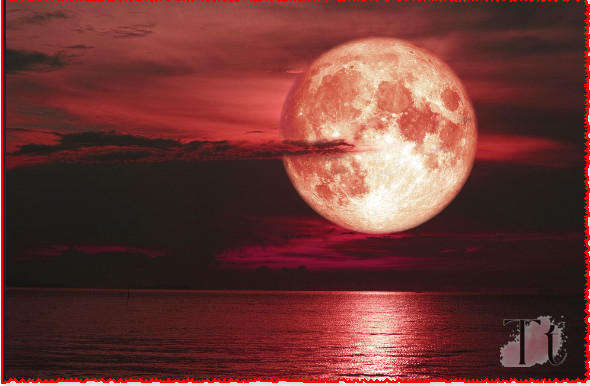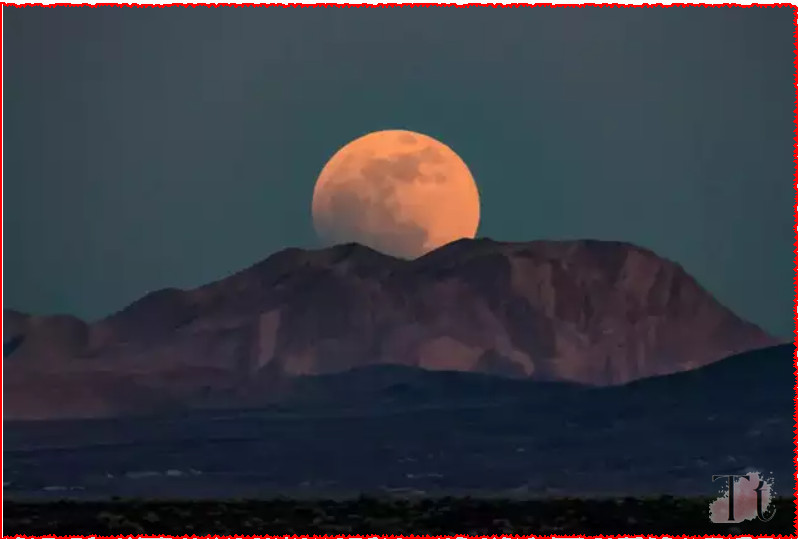The phenomenon of the “strawberry moon” rising is a captivating event for astronomers and sky watchers alike, especially when it coincides with significant astronomical occurrences like the summer solstice. This year, the strawberry moon is set to rise on the evening of June 21, just after the longest day of the year. The term “strawberry moon” is derived from the traditional names given to full moons by Native American tribes and later popularized by farmer’s almanacs. This particular full moon doesn’t appear strawberry red but is named for the strawberry harvesting season in North America. The event this year is particularly special due to its alignment with the summer solstice, providing unique viewing opportunities and notable astronomical phenomena.
Table of Contents

The Cultural and Historical Significance of the Strawberry Moon
The strawberry moon has deep roots in the cultural practices of Native American tribes, particularly the Algonquin, Ojibwe, Dakota, and Lakota peoples. For these communities, the June full moon was a natural marker signaling the time to harvest wild strawberries, an important food resource. The naming tradition reflects a close relationship with the land and the seasonal cycles essential for survival and prosperity. Understanding these historical contexts enriches our modern appreciation of the strawberry moon, linking us to centuries-old traditions that celebrated the rhythms of nature.
The Significance of the Strawberry Moon
The strawberry moon’s name is rooted in Native American traditions, particularly those of the Algonquin tribes in the northeastern United States. These tribes named each full moon to mark the changing seasons and agricultural cycles. In June, the ripening of strawberries coincided with the full moon, hence the name “strawberry moon.” This practice of naming full moons based on seasonal events was later adopted by European settlers and became widely known through publications like the Old Farmer’s Almanac.
In addition to the strawberry moon, the June full moon has other historical names. In European traditions, it is sometimes called the Mead or Honey Moon. Mead is a fermented drink made with honey, and the name likely originates from the honey harvest season in early summer. There is also a romantic connection, as the term “honeymoon” may be tied to this full moon, reflecting the custom of June weddings and the “sweet” nature of early marriage.
The Summer Solstice and the Strawberry Moon
The summer solstice, occurring on June 21, marks the longest day of the year in the Northern Hemisphere. This is when the Earth’s axial tilt is most inclined towards the sun, resulting in the maximum daylight hours. The solstice is an astronomical event that has been celebrated by various cultures throughout history, often signifying the start of summer.
This year, the full moon rises shortly after the solstice, creating a striking visual spectacle. Because of the solstice, the strawberry moon will appear particularly large and low in the sky. This is due to the “moon illusion,” a phenomenon where the moon looks larger near the horizon than when it is higher in the sky. This illusion is a trick of perspective; the moon’s actual size doesn’t change, but our brains perceive it as larger against the horizon’s context.
Why Does the Moon Appear Bigger?
The moon illusion is a well-documented optical effect that has puzzled observers for centuries. When the moon is low on the horizon, it appears larger than when it is high in the sky. This illusion occurs because our brains interpret the size of the moon in relation to objects on the horizon, such as trees and buildings. When the moon is high in the sky, there are no such reference points, and it appears smaller.
NASA explains that this year’s strawberry moon will be the lowest full moon of 2024, enhancing the illusion. The moon’s low position is a result of its orbit and the tilt of the Earth’s axis. As the moon rises in the southeast, it may also take on a golden hue due to the scattering of light in the Earth’s atmosphere, adding to its visual appeal.
Monthly Full Moons and Supermoons
Each month’s full moon has its own name, often derived from Native American, Colonial American, or European traditions. For example, January’s full moon is known as the Wolf Moon, February’s as the Snow Moon, and so on. These names reflect the natural phenomena or activities associated with each period.
Occasionally, a full moon coincides with the moon’s closest approach to Earth in its elliptical orbit, known as perigee. When this happens, the moon appears larger and brighter than usual and is referred to as a supermoon. Conversely, when the full moon occurs at the moon’s farthest point from Earth, it is called a micromoon. The average distance from Earth to the moon is about 238,855 miles, but during a supermoon, it can be as close as 226,000 miles, and during a micromoon, as far as 253,000 miles.
Summer Meteor Showers and Eclipses
In addition to the strawberry moon, the summer sky offers other spectacular events, such as meteor showers and lunar eclipses. Two prominent meteor showers to watch for in Northern California are the Delta Aquarids and the Perseids.

Delta Aquarids Meteor Shower
The Delta Aquarids meteor shower peaks between July 28 and July 30, but meteors can be seen several days before and after these dates. This shower originates from the southern sky around midnight and overlaps with the Perseids, enhancing the viewing experience. On a clear night with minimal light pollution, observers can expect to see 15-20 meteors per hour.
Perseids Meteor Shower
The Perseids is one of the most anticipated meteor showers of the year, known for its high frequency and bright fireballs. This shower peaks between August 11 and August 13, with the best viewing times from midnight to dawn. However, meteors can often be seen in the evening as well. Under ideal conditions, the Perseids can produce up to 50-60 meteors per hour, making it a favorite for camping trips and night sky enthusiasts.
Partial Lunar Eclipse
On September 17, a partial lunar eclipse will be visible in Northern California. A lunar eclipse occurs when the Earth passes between the sun and the moon, casting a shadow on the moon. In a partial eclipse, only a portion of the moon enters the Earth’s shadow, creating a striking visual effect. This particular eclipse is notable because it coincides with a supermoon, where the moon is at its closest point to Earth, making it appear larger and more dramatic.
Viewing Tips and Considerations
For the best viewing experience of these astronomical events, it’s essential to find a location with minimal light pollution. Urban areas with streetlights and buildings can significantly reduce the visibility of celestial events. Instead, seek out rural areas, parks, or designated dark sky sites.
To enhance your experience, consider using binoculars or a telescope. While the naked eye is sufficient for enjoying the strawberry moon and meteor showers, optical aids can provide a closer look at lunar details, planets like Saturn, and other celestial objects. For meteor showers, lie back on a reclining chair or blanket and let your eyes adjust to the darkness for optimal viewing.
Cultural and Historical Context
The naming of full moons and the observation of celestial events have deep cultural and historical significance. Many ancient civilizations built structures aligned with the solstices and equinoxes, such as Stonehenge in England and Machu Picchu in Peru. These structures were used for agricultural planning, religious ceremonies, and as calendars.
In Native American cultures, the full moon names reflect a deep connection to the natural world and seasonal changes. These names were not just arbitrary labels but part of a broader system of timekeeping and cultural practices. For instance, the strawberry moon signaled the time to harvest strawberries, while the harvest moon in September marked the time for gathering crops.
The summer solstice itself has been celebrated in various ways across different cultures. In ancient Rome, it was marked by the festival of Vestalia, dedicated to Vesta, the goddess of the hearth. In Scandinavia, Midsummer celebrations involve bonfires, dancing, and feasting, traditions that continue to this day.
Modern Celebrations and Observations
Today, astronomical events like the strawberry moon and meteor showers are celebrated by both amateur and professional astronomers. Organizations such as NASA, the American Meteor Society, and various astronomy clubs often hold public viewing events and provide educational resources to help people appreciate these natural phenomena.
Social media and technology have also transformed how we experience and share these events. Real-time updates, live streams, and photography tips are readily available, allowing a broader audience to participate in and enjoy the wonders of the night sky.
Conclusion
The strawberry moon rising over Northern California on June 21 is a celestial event rich with cultural history and astronomical significance. This year’s alignment with the summer solstice adds an extra layer of intrigue, offering a unique opportunity to observe the moon’s larger appearance due to the moon illusion. Combined with the upcoming meteor showers and a partial lunar eclipse, the summer night sky promises to be a source of wonder and excitement.

Whether you are an experienced astronomer or a casual sky watcher, these events provide a chance to connect with the natural rhythms of our planet and the cosmos. By understanding the science and traditions behind these phenomena, we can appreciate the beauty and complexity of the universe we inhabit.
Additional Notes: Monthly Full Moons and Supermoons
Each month’s full moon has its own name, often derived from Native American, Colonial American, or European traditions. For example, January’s full moon is known as the Wolf Moon, February’s as the Snow Moon, and so on. These names reflect the natural phenomena or activities associated with each period.
Occasionally, a full moon coincides with the moon’s closest approach to Earth in its elliptical orbit, known as perigee. When this happens, the moon appears larger and brighter than usual and is referred to as a supermoon. Conversely, when the full moon occurs at the moon’s farthest point from Earth, it is called a micromoon. The average distance from Earth to the moon is about 238,855 miles, but during a supermoon, it can be as close as 226,000 miles, and during a micromoon, as far as 253,000 miles.
Read more about Israel’s Power Grid Exposed: Urgent Crisis in 2024


1 thought on “Strawberry Moon’s Enchanting 2024 Spectacular Phenomenon”